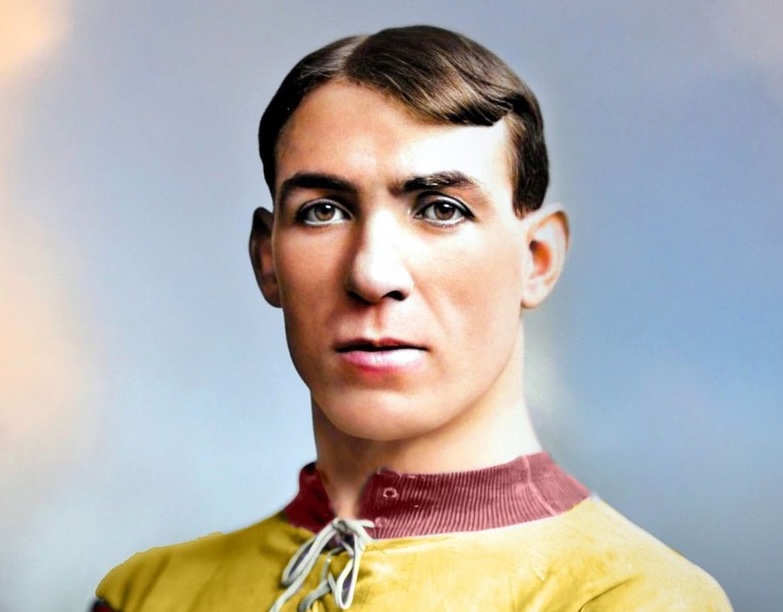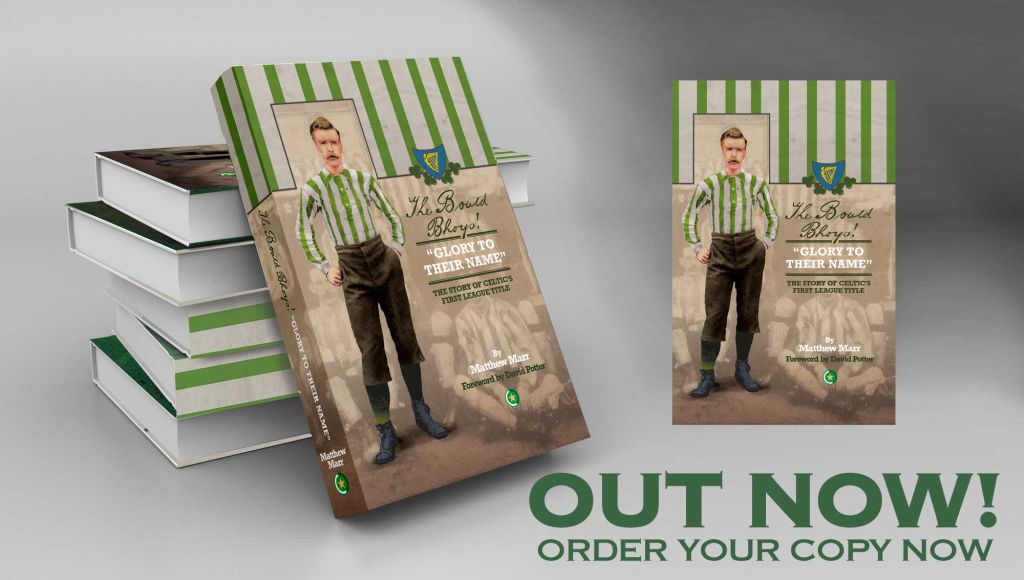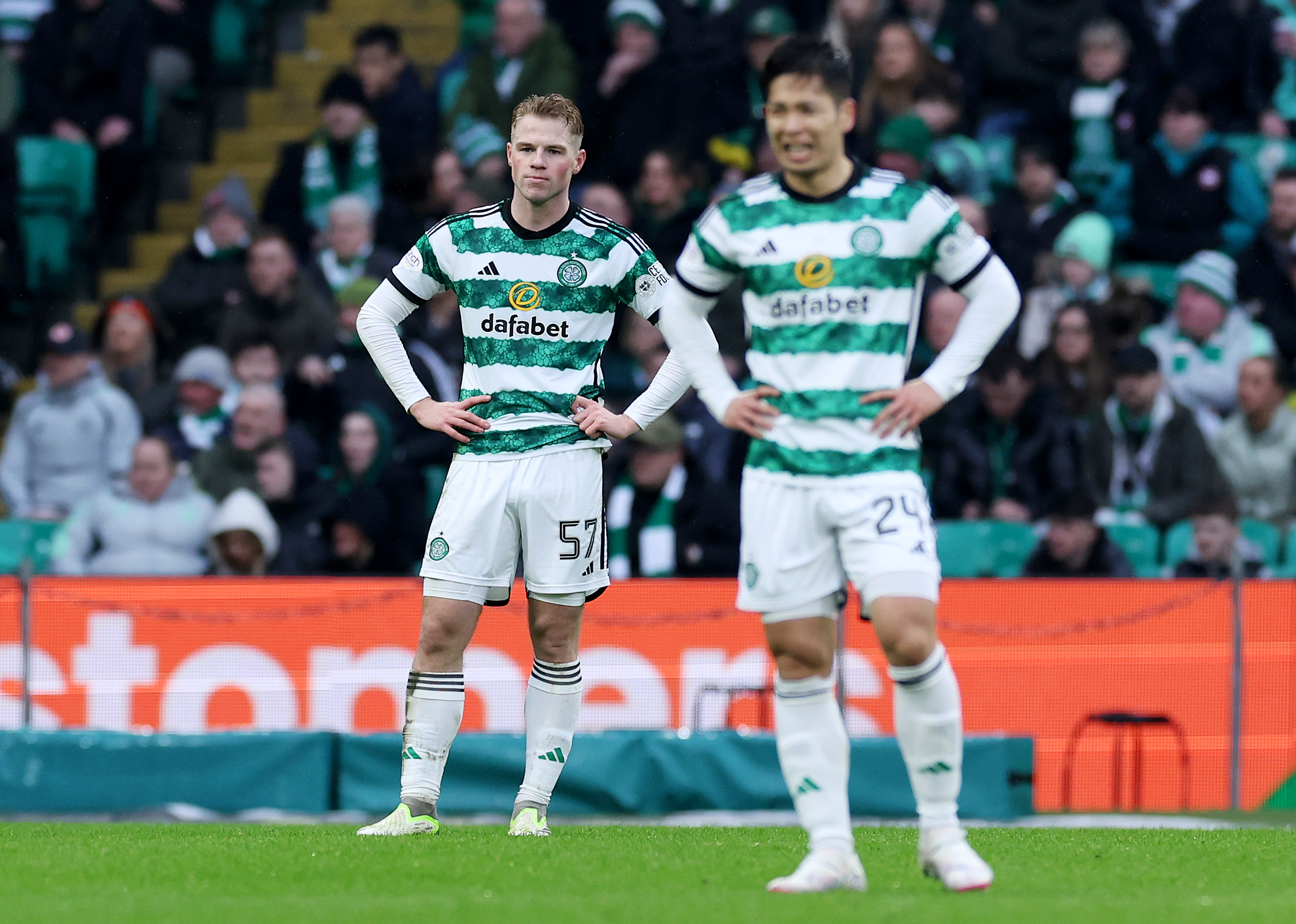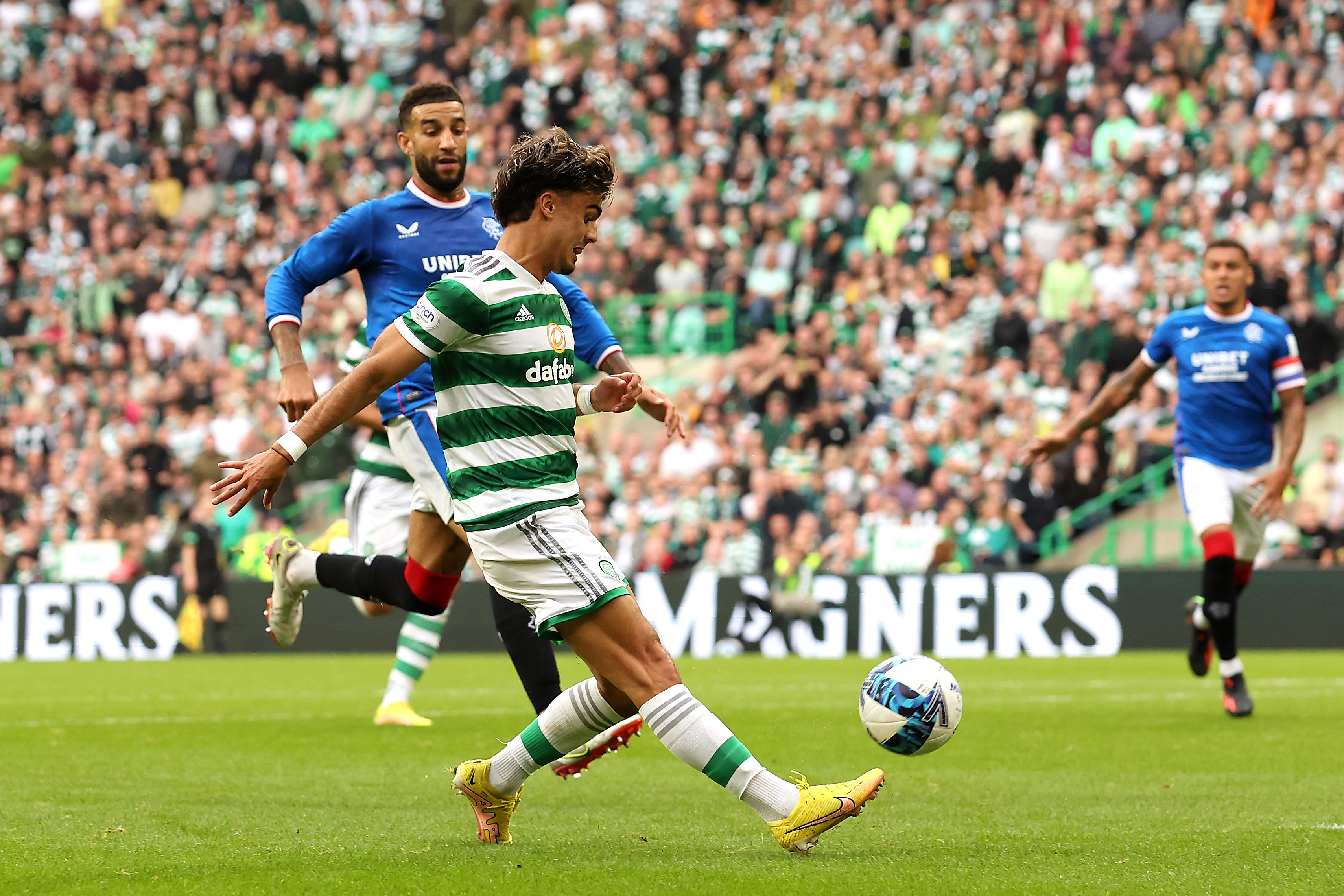Another Celtic rite of passage…Frank, Dan and Maura
Part 3: A Celtic O’Rourke connection south of the border for Scotland star Frank
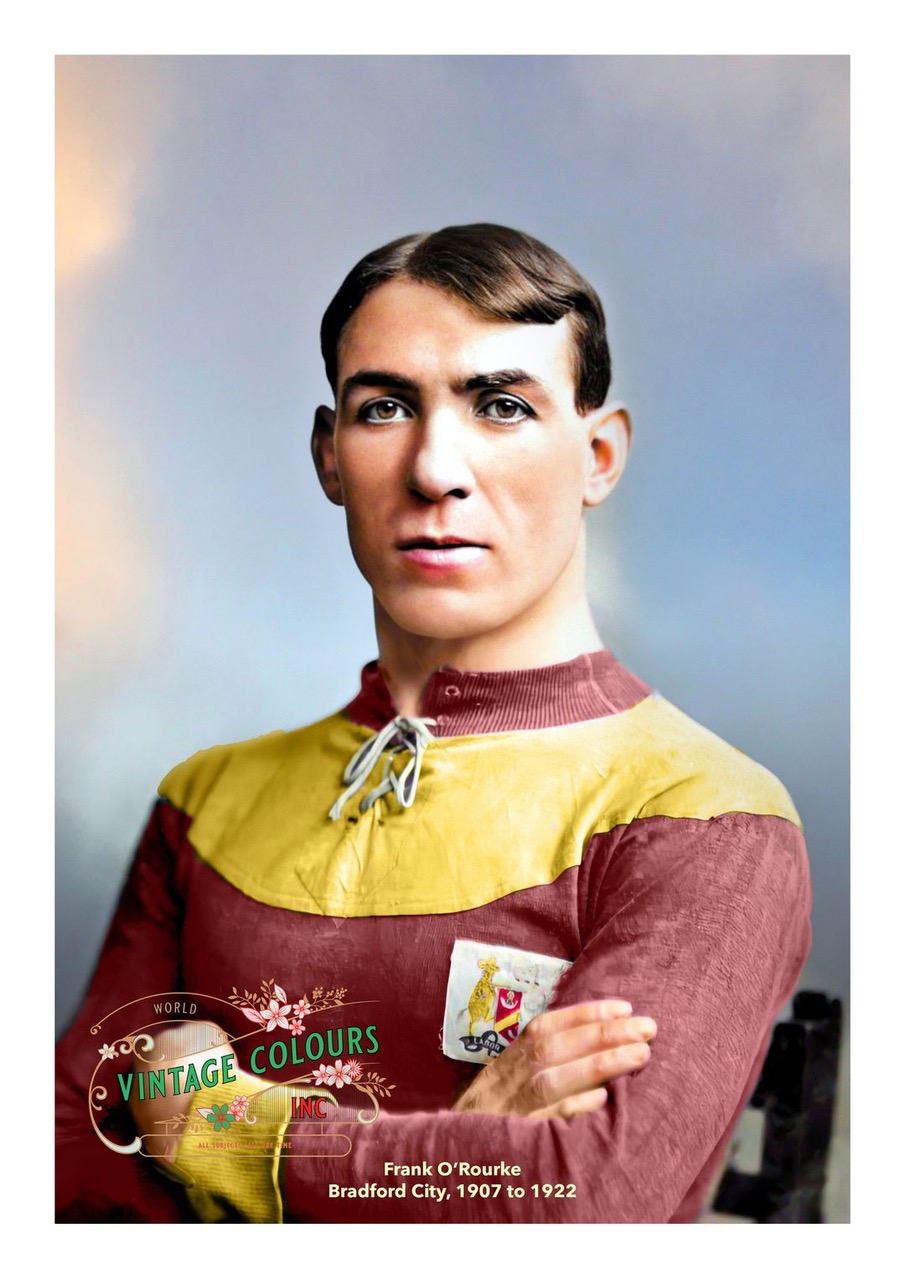
Celtic would go on to win Scotland’s first League and Scottish Cup Double that spring of 1907, Willie Orr’s last major honours as captain before his retiral, but by then Frank’s career had taken a major step forward. On Saturday, 16 March, he made his senior international debut, leading the Scottish attack against Ireland at Celtic Park. By doing so, I believe him to be just the fourth Airdrieonians player to represent Scotland at that level.
Goalkeeper James Connor was the first, lining up alongside James Kelly and Mick Dunbar at Ulster Cricket Ground, Ormeau Road, Belfast in March 1886, both future Celts on target in Scotland’s 7-2 win over Ireland. As an aside, Connor holds the distinction of being the keeper who faced the first-ever penalty kick to be awarded in world football.
Four days after the new law was introduced on 2 June 1891, in an Airdrie Charity Cup-tie against Larkhall’s Royal Albert at Mavisbank Park, Connor was beaten from 12 yards by Irishman James McLuggage. What a heavy load that would have been for him to carry over the years. I’ll get my coat.
Next up was inside-forward Robert Scott, who partnered Celtic’s Jimmy Blessington in a 2-1 victory over the Irish at nearby Solitude in March 1894. The previous April, the pair had again teamed up as Scott made a solitary guest appearance for Celtic in a 3-0 win over Rangers at the original Celtic Park which effectively clinched the club’s first-ever League title.
And the third Broomfield star to play for Scotland kept it in the family. Left-back Matt Scott – Robert’s younger brother – was the first player from Airdrieonians to captain his country, as Scotland beat Wales 5-2 at Fir Park, Motherwell in March 1898.
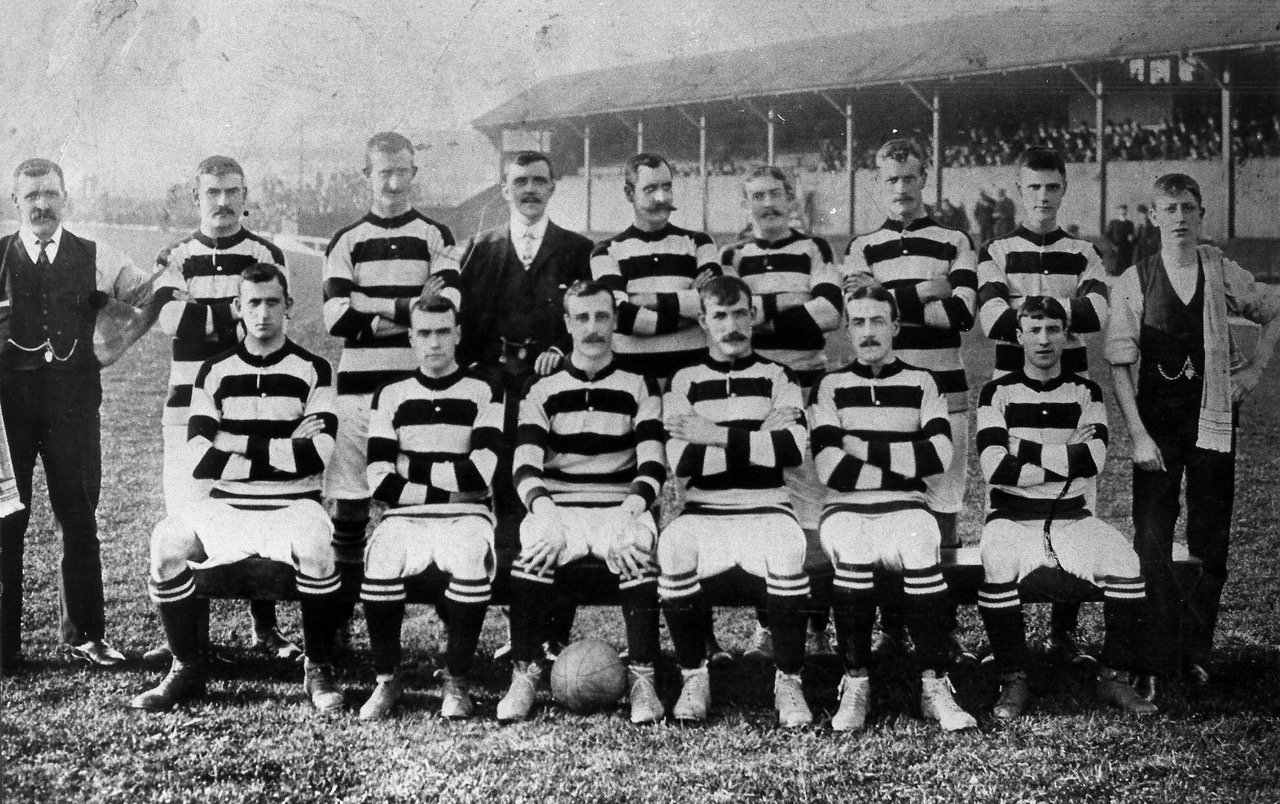
All 11 men in the home side at Celtic Park on that St Patrick’s weekend of 1907 played their domestic football in Scotland, whilst with the exception of goalkeeper Billy Scott of Everton and Aberdeen inside-forward Charlie O’Hagan, the Irish team also consisted of home-based players. Scotland lined up as follows in front of 26,000 spectators, wearing an unusual maroon jersey with the Irish in their traditional navy blue.
Willie Muir (Dundee), Tom Jackson (St Mirren) & Willie Agnew (Kilmarnock);
William Key (Queen’s Park), Charlie Thomson (Hearts) & Alec McNair (Celtic);
Alec Bennett (Celtic), Bobby Walker (Hearts), Frank O’Rourke (Airdrieonians), Peter Somers (Celtic) & John Fraser (Dundee).
Frank would play a significant part in Scotland’s 3-0 victory, converting Alec Bennett’s teasing cross to put his country ahead five minutes from the interval. Peter Somers had limped off with a muscle strain after just 15 minutes but even with 10 men the Scots were too strong, Bobby Walker heading home for 2-0 shortly after the restart. With eight minutes remaining, Frank was pulled down in the box, Charlie Thomson completing the scoring at 3-0 from the spot. With weather conditions worsening, English referee John Lewis of Blackburn called an early halt to proceedings.

.Despite the inclusion of their Anglo contingent in Wrexham a fortnight earlier, Scotland had lost their opening Home International fixture 1-0 to Wales, and their counter in the 1-1 draw with England at St James Park, Newcastle in early April would be an own goal from home captain Bob Compton. Thus, Frank would end the 1906/07 campaign as Scotland’s joint top scorer with Hearts duo Charlie Thomson and Bobby Walker! And with no further caps awarded, his international record would be one goal and one assist from one winning game. Not too bad!
Within weeks of that match, Frank had swapped Lanarkshire for West Yorkshire, joining the large Scottish colony at English Second Division outfit Bradford City, a club founded just four years earlier and under the management of a man with a Celtic connection, Peter O’Rourke, to the best of my knowledge no relation. Born in Newmains, Lanarkshire, on 1 June 1873, the Bradford City manager was less than three years older than his new signing.
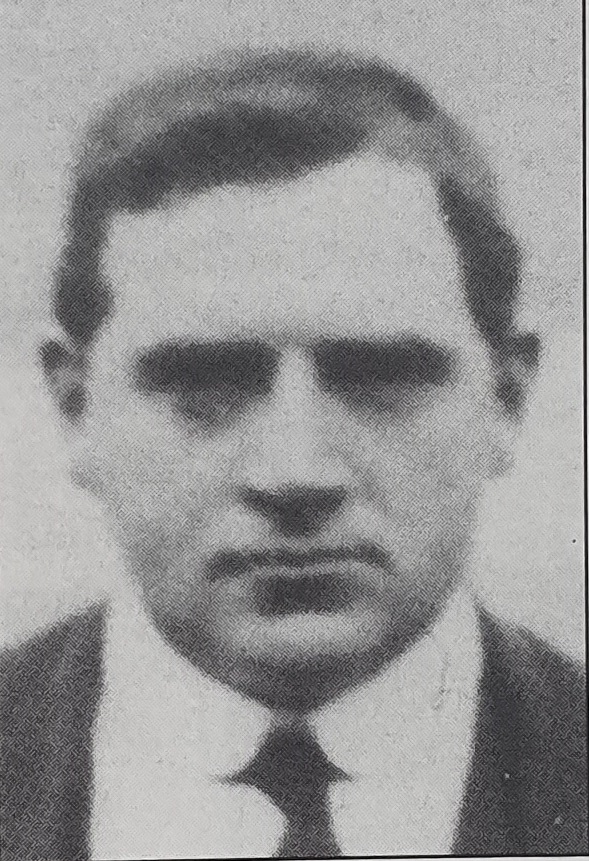
Peter had joined the Glasgow Celtic from the Mossend version in February 1895, making his senior debut at wing-half alongside Willie Maley as a replacement for the ‘confined to bed’ James Kelly in a 4-4 draw with Third Lanark (then known as 3rd Lanarkshire Rifle Volunteers or 3rd LRV) in a League match at Celtic Park on 23 February 1895. Also missing superstar defender Dan Doyle – legendary Queen’s Park full-back Wattie Arnott declining the offer to replace him at the last minute due to the ground conditions – the Celts had lost 4-0 to Hearts at Tynecastle the previous week and they were 4-1 down in this one at one stage before recovering bravely to salvage a point.
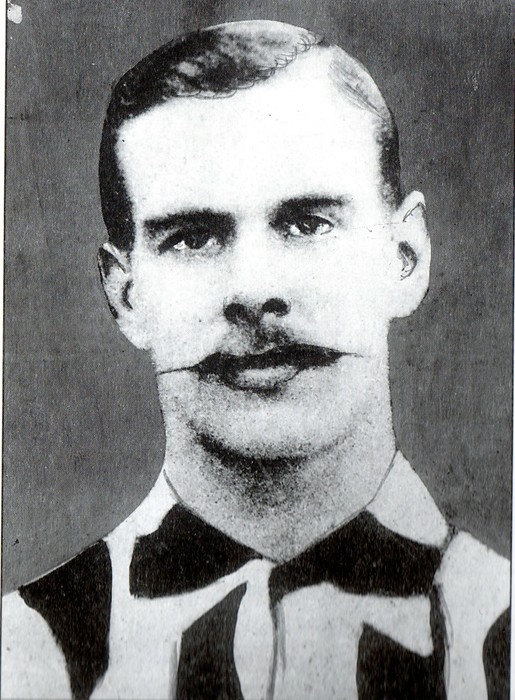
Peter O’Rourke made a further two League appearances in that campaign, the latter alongside James Kelly in a 1-1 draw with Rangers at the original Ibrox Park, as Celtic finished five points behind champions Hearts in second spot, a reversal of the previous season’s placings. St Bernard’s made it an Edinburgh double that season by winning the Scottish Cup, their only major honour. Peter did win his first medal as a Celt though, on Saturday, 25 May 1895, a Sandy McMahon hat-trick and James Kelly strike enabling the Bould Bhoys to defeat Rangers by 4-0 in the Glasgow Charity Cup final at the first Cathkin Park on Dixon Road. Newspaper reports of the day cite him as ‘causing havoc to Rangers with his massive throw-ins.’

Peter O’Rourke would double that game tally as Celtic reclaimed their League title in 1895/96, five of those six appearances coming in the opening weeks of the season, during which time the Celts also travelled south to play friendlies with Manchester City, Liverpool and Newcastle United. The match at Anfield saw Liverpool open their new stand, the newly formed Reds having taken over the stadium from original owners Everton just three years earlier.
A fine 4-2 win over Rangers at Ibrox in early September – where a Celtic side missing stars Dan Doyle and Sandy McMahon recovered from two goals down in the second half to win 4-2 – was followed seven days later by a calamitous 5-0 home defeat to defending champions Hearts, a record which endures to this day. That would see Peter drop out of the team and, ironically enough, miss out on the record 11-0 home victory over Dundee at the end of the following month and the 6-2 destruction of Rangers in December.
He would play just one more League game for the club, in a 2-1 win over Third Lanark at Cathkin on the last day of February 1896, the final fixture. Celtic had effectively won the title two months earlier in their penultimate match, a 3-0 victory over Dumbarton before Christmas. Peter played alongside Willie Maley at Cathkin that afternoon, and the great man himself would turn out just one more time for his beloved Celtic after that, a home draw with Hibernian in November 1896.
Peter would be restricted to Glasgow League appearances the following season and by May 1897 he had left Celtic and headed for English Second Division outfit Burnley. Spells at Lincoln City, Third Lanark and Chesterfield would follow before his final and most successful playing stint commenced at new club Bradford City, elected to the English Football League in 1903 to replace another Yorkshire side in Doncaster Rovers before playing a match! He became club captain at Valley Parade then assumed the role of player/manager in 1905, just 32 years old.
His namesake Frank O’Rourke had impressed the Bantams management in a friendly match between Bradford City and Airdrieonians at Valley Parade in late March 1907, following which they tracked him down to a Leeds hotel room and signed him on the spot! Frank made a scoring debut for his new club in a 2-1 home defeat to Champions-elect Nottingham Forest on Saturday, 6 April 1907, and the goals would pretty much flow freely after that.
Bradford City finished fifth that spring as Forest and Chelsea took the step up, but they would gain promotion to the top-flight the following season, finishing that campaign two points clear of Leicester Fosse (later renamed City) to win the English Second Division title after just five years existence. Frank was the club’s top scorer with 21 goals from his 38 appearances, including four against Gainsborough Trinity in October and a hat-trick against Stoke City in March 1908.
One of his new teammates that season was former Dundee goalkeeper Willie Muir, who had made his Scotland debut alongside Frank at Celtic Park the previous March. And there would another familiar face arriving in the city that summer, younger brother Harry O’Rourke leaving Airdrieonians to join Bradford Park Avenue in July. This was a club formed just 12 months earlier when members of the longstanding Bradford FC voted to change code from rugby to association football.
After just a single season in the Southern League, both Bradford AFC and Tottenham Hotspur – who had finished six places above them in seventh – were elected to the Second Division, the Yorkshire club having the name of their Park Avenue ground unofficially bracketed after their name to avoid confusion with Bradford City.
City would find their first season in the English top-flight extremely difficult, surviving at the expense of Manchester City by a mathematical fraction on goal average, ever-present Frank again heading the goalscoring charts with 19. He had also become a dad for the third time, baby Francis Patrick O’Rourke coming into the world on 21 April 1909 back in Longmuir.
Harry’s Bradford Park Avenue would also struggle, ending their Second Division campaign just one point clear of the Re-election zone. That was in stark contrast to the performance of the team promoted with them 12 months earlier from the Southern League, Tottenham Hotspur, whose second-place finish saw them join the top-flight in English football at the first attempt. That 1908/09 campaign would represent both the beginning and end of Harry O’Rourke’s career in English football. He returned to Scotland that summer to join non-League Bathgate.
Bradford City’s second top-flight campaign brought a dramatic improvement, the Bantams claiming seventh place ahead of traditional giants such as Sunderland and Everton, Frank yet again the leading marksman at the club with 23 goals. Frank and Catherine would then see their young family completed by the arrival of a fourth child, a second daughter, to be named after her mother. Catherine O’Rourke was born at Telfer’s Land, Coatbridge on 24 July 1910.
But the zenith at his time at the club and indeed, in Bradford City’s history, was season 1910/11. Only champions Manchester United and runner’s-up Aston Villa secured more League points than City’s tally of 45, the Bantams edged into fifth place on goal average behind the aforementioned powerhouses Sunderland and Everton. That remains the club’s highest-ever League placing. And they would complement that achievement by securing the only major honour in their history, the FA Cup.
Bradford City’s opponents in the final, played at Crystal Palace on Saturday, 22 April 1911, were the cup-holders Newcastle United. The Magpies were the dominant team in England at that time, having won three League titles since 1905 and making their fifth FA Cup final appearance in just seven years.
The first match ended goalless before 69,000 spectators and the replay was staged at Old Trafford, Manchester four days later, the only goal of the game coming after 15 minutes from City captain Jimmy Spiers, one of eight Scots in the Bradford line-up. His header beat United keeper Jimmy Lawrence, who may have been distracted by the presence of Frank O’Rourke on the line. Some reports claimed that Frank got the final touch on the ball, something the player himself later denied.
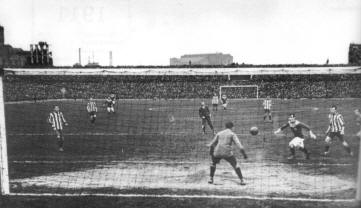
In any case, Frank was the club’s top goalscorer for the fourth successive season, this time with 14, and that Old Trafford goal was enough to see the FA Cup head to Bradford for the first – and to date only – time. There is some incredible footage of both games in that final at this link below.
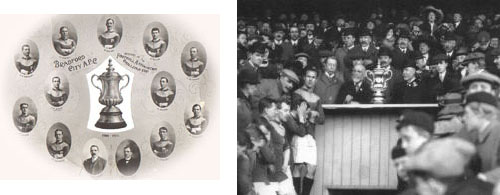
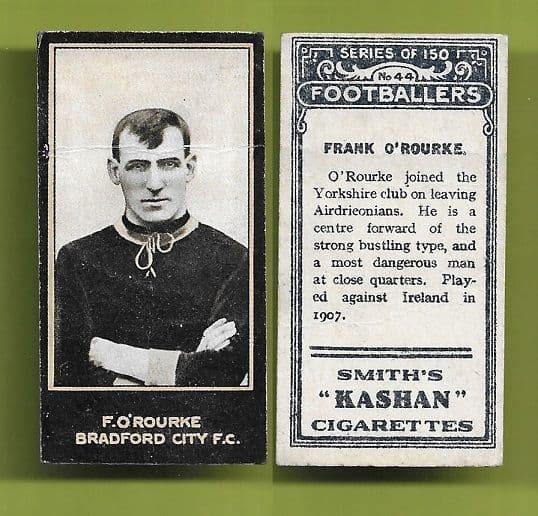
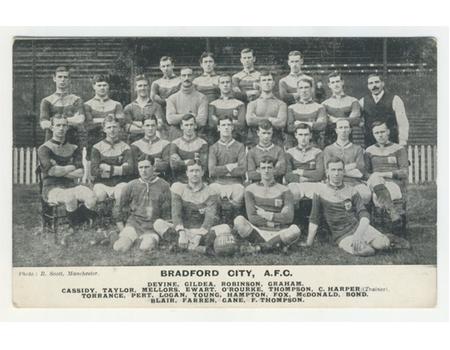
As an aside, just like Celtic in Lisbon more than half a century later, Bradford City would be the first side to lift an iconic trophy. Having realised that they did not own the copyright to the design of the existing FA Cup, the English FA arranged for a new trophy to be designed, the shape that we are familiar with today. Curiously enough it was a Bradford-based jewellery business – Messrs Fattorini & Sons – which was awarded the contract to produce the trophy, the first winners of such then being local outfit Bradford City at Old Trafford in April 1911.

As a footnote to that final goal, Jimmy Spiers was born in Govan and had played for Maryhill Juniors, Rangers and Clyde before moving to Bradford in 1909. He would join Leeds City (later renamed as United) in 1912 before volunteering for active service in 1915. Jimmy would be awarded a Military Medal for bravery before becoming yet another tragic statistic, one of so many young men slaughtered in that pointless conflict. Jimmy fell in Flanders in August 1917, just two months after Celtic’s Peter Johnstone had lost his life on that brutal Western Front.
Sadly, death had not been a stranger to Frank in the years preceding that war. His son Francis Patrick O’Rourke passed away in Bradford in the spring of 1913, before his fourth birthday. And in another strange and cruel twist of fate, Bradford City manager Peter O’Rourke’s son – also named Francis – would lose his life in Newfoundland, Canada in October 1919.
Frank’s games and goals had reduced over the seasons which followed the FA Cup triumph, his final tally creeping up to 88 in almost 200 League appearances before the outbreak of war in 1914. That would remain a club record until the late 1980’s, and Frank would remain at Bradford City as a player then coach until retiring back to Scotland in 1926, by which time, another member of Maura McColgan’s family was plying his football trade at Celtic Park.
To be continued.
Hail, hail!
Matt Corr
With grateful thanks to Jamie Fox for provision of images of Frank O’Rourke’s memorabilia.
Follow Matt on Twitter/X @Boola_vogue
And then there were eight…
The Celtic Star Books Collection.
Heroes and history @ https://t.co/jXLgPJLO1O 🍀⭐️📚 pic.twitter.com/sqUOOplVah
— Matt Corr (@Boola_vogue) November 11, 2023
